Four square all light sheer white blank planes all gone from mind. Never was but grey air timeless no sound figment the passing light. No sound no stir ash grey sky mirrored earth mirrored sky. Never but this changelessness dream the passing hour.
– Samuel Beckett, Lessness
Montreal artist Sophie Jodoin never thought of Samuel Beckett as an influence yet her recent work seems so well summarized by one sentence from his 1931 essay on Marcel Proust, “The artistic tendency is not expansive, but a contraction.” This is an early text by a young Beckett that anticipates the later density of Lessness (1970), a short prose piece said to be composed by pulling sentences out of a hat, or his famous monologue Not I (1972), which solely features the mouth of an actor while the rest of her body is blacked out. As Beckett used fewer words, they became increasingly compact. Burdened with the weight of meaning, poetic considerations like position, context, and rhythm became paramount as the word’s capacity for communication diminished. Many of Jodoin’s representational drawings look like a Samuel Beckett play – a still from Not I might be any of her conté on Mylar limbs floating in thick black – though it’s her move toward the fragmentation, or in some cases, eradication of the image that can be interpreted as a contraction. Her recent abstract works are not freed from the restrictions of representation but weighted with the possible meanings of its absence. Rather than exercises in form, Jodoin’s drawings and collages are evidence of that which is no longer present. She distrusts the image, or perhaps more to the point, her skill in producing photorealistic depictions. She understands how seductive representation can be, and its ability to simplify a reading just as it might overdetermine one. Jodoin’s ambivalence toward the image has led to work that is evidence of her process, her body, and ultimately, absence itself.
The central role of the body in Jodoin’s practice is best understood through the bodies populating Beckett’s world. As his texts become sparser, a clearly defined protagonist disappears while his body’s presence continues to be felt through spacing, punctuation, light, and sound. Beckett’s 35-second theater piece Breathe, for example, features a stage of piled garbage while a child’s wail turns into a dying gasp timed with the brightening and dimming of light. In a similar fashion, bodies in Jodoin’s work blur and fragment until they are simply represented through objects, or implied in the handling of material. Jodoin never uses fixative to stabilize her meticulously crafted works. Even as she makes her drawings, she leaves traces of her hand behind – smears, scrapes, and other marks of deterioration exist alongside scores of creation. Over time, even the most pristine images can develop a faint charcoal halo simply from being stored and handled. Evidence of the body is also present in the things Jodoin chooses to draw. Hers are never complete objects so much as remnants: a diagram, a piece of furniture, an arm, a broken text. These feel like decontextualized pieces from someone’s life, fragments of a larger narrative. The images are made through a combination of drawing, print, and collage but always rendered so that it’s difficult to ascertain which is which. At times these images mimic the signature of another medium altogether. Using traditional drawing tools, Jodoin replicates the interlacing of a video still, the smear of photocopy toner, or a camera’s blur. She portrays traces of objectivity as an aesthetic choice rather than an empirical value.
Jodoin’s most minimal work to date was shown in a two-person exhibition at Montreal’s Battat Contemporary, in the summer of 2014. For the first time in her career, she presented intimate, framed collages that appeared more like drawings in their sensitivity to line and space. Though superficially reminiscent of mid-twentieth-century Minimalism, these abstract works contradict the tenets of Modernist practice with their emphasis on temporality and the physicality of touch. The collages are made from books and magazines that have been carefully cut, and in some cases torn, to create simple planes, squares, and rectangles. Even as they refer to abstract imagery that is often theorized as timeless, the works suggest the passage of time through the fragility of their materials. These pieces are not archival, as attested to by the spreading yellow hue across thin, glossy magazine pages. Their subtle decay functions as an aesthetic device, as does the evidence of tearing. When examined closely, our familiarity with the weight and texture of commercially-printed material quickly brings each work back to its source. The empty squares and rectangles nod to Minimalist tropes while consisting of missing text from a standardized magazine layout, or an absent image from a book’s illustration panel. While this absence implies excision, Jodoin doesn’t use a reductive process. What initially looks like a removal is always an addition, or, as with Beckett, a contraction. Pages are layered one atop the other, though the thinness of the paper never creates a substantial material weight. We can at times detect the ghost of text behind layered sheets. In their intimate scale and materiality, each work is a remnant of handling, reading, flipping pages, and forgetting. As these images decay, they refer to the body that made them, as well as the diminished grand narratives they distantly evoke.
Nearly a year later, in April 2015, Jodoin opened a solo exhibition at Battat Contemporary, une certaine instabilité émotionnelle, that included an open-ended series of works on paper, both abstract and representational, in addition to a sound-text piece. At the outset, the show seemed like a return to representation from Jodoin’s previous interest in abstract collage. However, she is quick to point out that she has always made abstraction as a means to think through her decision-making process. Her various series, she notes, are made concurrently over the process of many years and developed in dialogue with one another. The “in-between” nature of the drawings in the most recent exhibition is particularly interesting in reference to what came before. The new work invites us to consider the relationship between representation and abstraction, as well as process and completion. Placed side by side on long tables spanning the gallery, the works exist more like specimens on an examination table. They are small, black-and-white images, less like drawings and more like objects carefully placed on pristine sheets of paper. There is an encyclopaedic breadth to their content and style of depiction. From scientific diagrams to smudged charcoal, they indiscriminately mix visual vocabularies, presenting them in a database format. In isolation, the works feel decontextualized and abstracted. Together, they form the evidence of a person’s life – a proposal for one narrative amongst many.
Both the abstract collage and the drawings of objects evince Jodoin’s turn toward “lessness.” Beckett’s short prose work of the same title, originally written in French as Sans, is structured using a random permutation of sixty sentences, each written twice, to create the semblance of a narrative. And, like Jodoin’s ongoing image series, Beckett’s text braids descriptions of the body and psyche with those of abstract shapes and planes. Interestingly, a cross-disciplinary research group wrote a computer program that further rearranges Beckett’s sentences using an order generated from atmospheric noise so as to invite new interpretations of the work. According to the paper published with the project, the original version of Lessness is one of 1.9 x 10176 possible variations. The possibilities within Beckett’s writing method undermine the very definition of “lessness,” though they do draw attention to the impossibility of ever adequately expressing whatever lies beneath, or even within, the words we use.
The sparseness evoked by the title Lessness is even further undermined if considered as a two-part suffix. The addition of -lessness pushes a word to its exact opposite creating a sense of unbounded possibility. The word “endlessness,” for instance, which appears in almost every paragraph of Beckett’s text, brings to mind infinity over the dread of finding no end. The same might be said of words like fearlessness, changelessness, or peerlessness. They are not negations as much as nouns evoking the infinite.
It’s in this way that, by presenting less, Jodoin draws attention to all that is possibly absent in this “lessness.” Her turn toward a minimal language is not an eradication but a contraction of the image that allows for a greater degree of purposeful ambiguity, both in interpretation and technical skill. The images in une certaine instabilité émotionnelle hover between abstraction and representation, recognition and mis-recognition. They produce clues to a puzzle that cannot be solved except through inference and imagining. Because Jodoin so often focuses only on the parts of things, images bear a familiarity that can’t quite be named, like a word on the tip of one’s tongue. At other times objects are presented whole in themselves, but only when they seem to tell part of the story. These objects might be a frayed piece of yarn, the plastic tab that seals a bread bag, or an unidentifiable mass that has been painstakingly rendered yet still remains a mystery. In their isolation these images become a sort of abstraction. Together, they propose possible narratives that can change or simply disappear with the rearrangement of a few images. Beckett’s random method of constructing Lessness (though some have argued choice must have been involved) illustrates our propensity to find connection and meaning even in the most unrelated of elements. Though Jodoin makes the most exacting decisions in the crafting of each individual piece, the process of putting them together can be an act of discovery even for the artist. Here, every decision, however small, can change the meaning of an entire work.
In her book Beckett and Decay, Kathryn White quotes Beckett as saying he wants to “give silence a voice.” She explains that this desire arises from the writer’s distrust of language’s ability to express the complexity of existence. In a new project space constructed in her live-in studio, Jodoin is attempting to give “nothingness a form.” The space, christened “the white room,” is a pristine, evenly-lit chamber whose dimensions are lesser than a conventional gallery. Beyond providing a place to exhibit work, the enclosure forms an abstract gesture that brings to mind Jodoin’s 2014 collages where each cut and tear was heavy with intent. It’s a blank slate filled with possibility, not in the sense of its obvious emptiness but in its reference to the page, the white cube gallery, and as a self-consciously, even pathologically empty space within the artist’s home.
Jodoin is the opposite of a hoarder, compulsively eradicating clutter in her life until absence is tangibly felt. In conversation, she describes her surprise at visitors’ “anguish” in finding themselves in the laboratory-like container. Deprived of all context, they lack a medium through which to engage. For Jodoin, the white room is a space of mental clarity, a point of infinity, or endlessness, where the senses are neutralized. The above quote from Lessness immediately echoes back, “Four square all light sheer white blank planes all gone from mind” – Jodoin calls it her “thinking space.”
Because of its size and location in the artist’s studio/home, the white room mirrors the intimacy of Jodoin’s work, which privileges the small scale, the temporal, and the domestic while utilizing these very elements to reference a modernist history marked by timelessness and monumentality. When the artist enters the space she is like one of her meticulously-drawn objects on a white sheet of paper, cropped out of the context of daily life. To this end, Jodoin uses the room as a three-dimensional drawing surface, which must be differentiated from the practice of installation. Just as she arranges her cut-outs, she positions drawings, collages, books, and objects in carefully demarcated squares. The even lighting negates shadow to render the room almost two-dimensional. Bereft of all other context, the artist allows the works to, as she says, “breathe their own life.”
In her book on Beckett, Kathryn White charts the instances of the infirm body in his writing, and connects it to what the author deemed the futility of language, and its gradual disintegration in his work. Jodoin’s practice is likewise tied to the presence, the absence, and the specter of the body – the body of the artist, the body of work, a body of evidence. As Jodoin’s drawings become more explicitly a trace of the body rather than its representation, they speak more fully to its transience and eventual disappearance. The artist’s focus on the vocabulary of image production is an explicit attempt to grapple with how we create meaning and what gets left behind when we’re gone. What gets left behind when the image is gone? Jodoin’s minimal aesthetic is (to use White’s words) a “dense and compressed style … which accommodates a language that endeavours to express ‘nothing’ while simultaneously conveying ‘everything’.” Contrary to actually showing less, the works Jodoin exhibits are saturated with potential like the knowing pause in a conversation or an awkward silence. In short, they have contracted. They have become obscured in density and weighted with possibility.

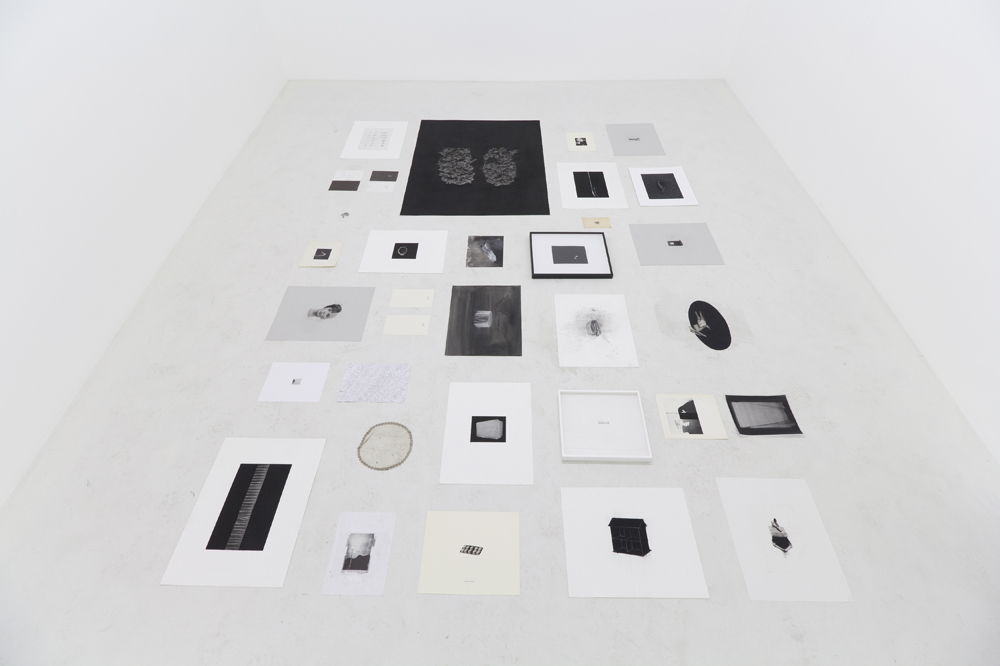
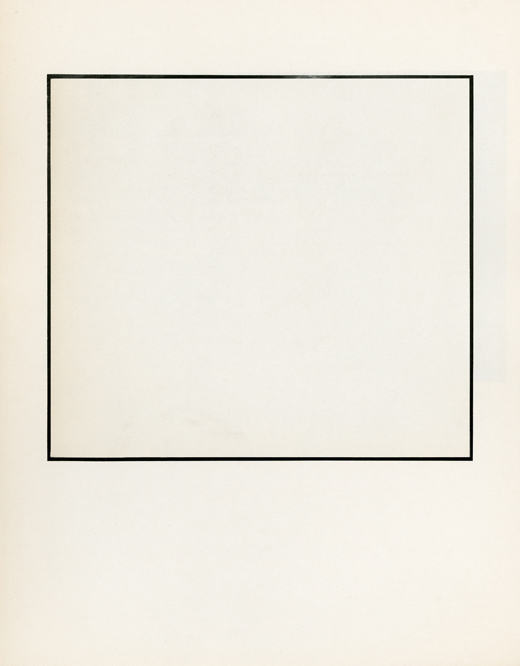
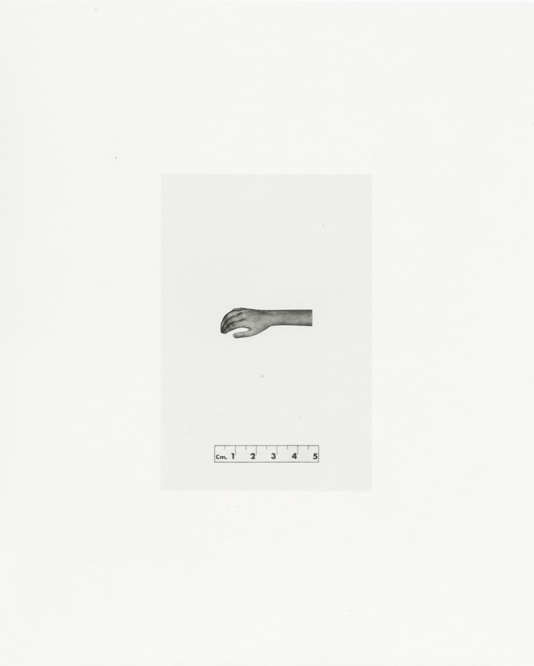
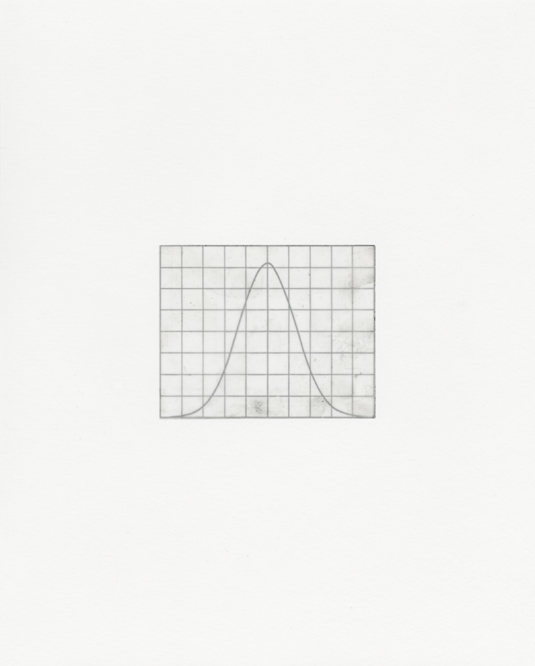
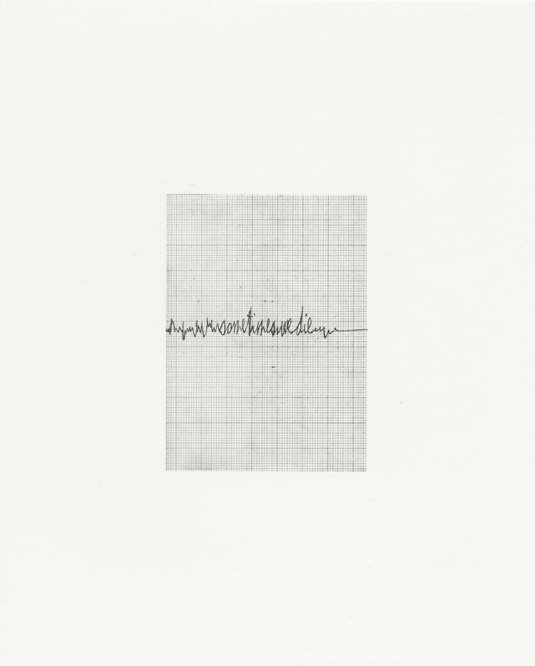
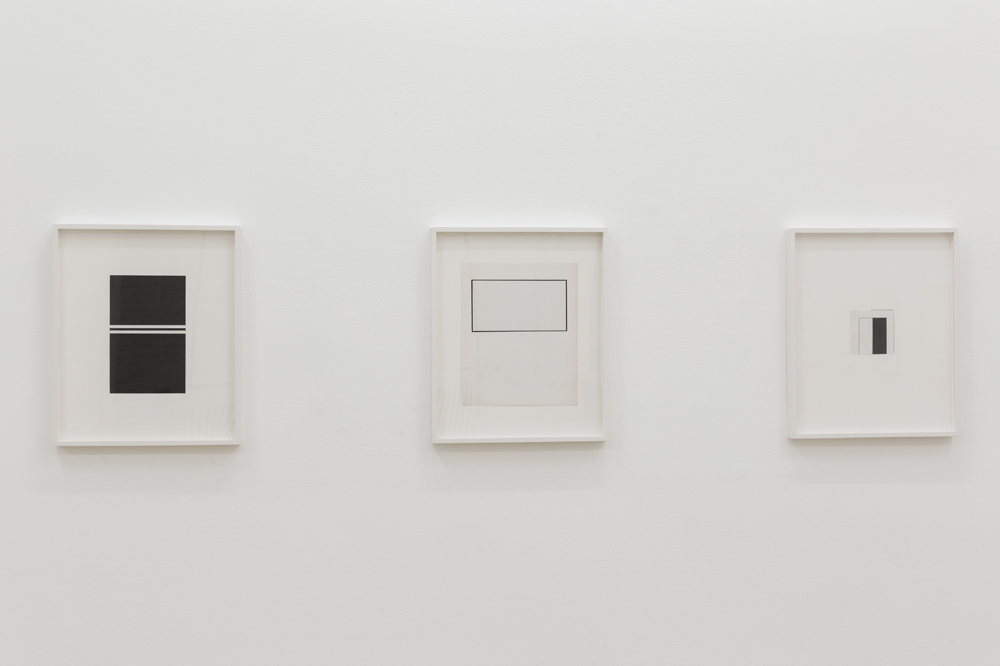
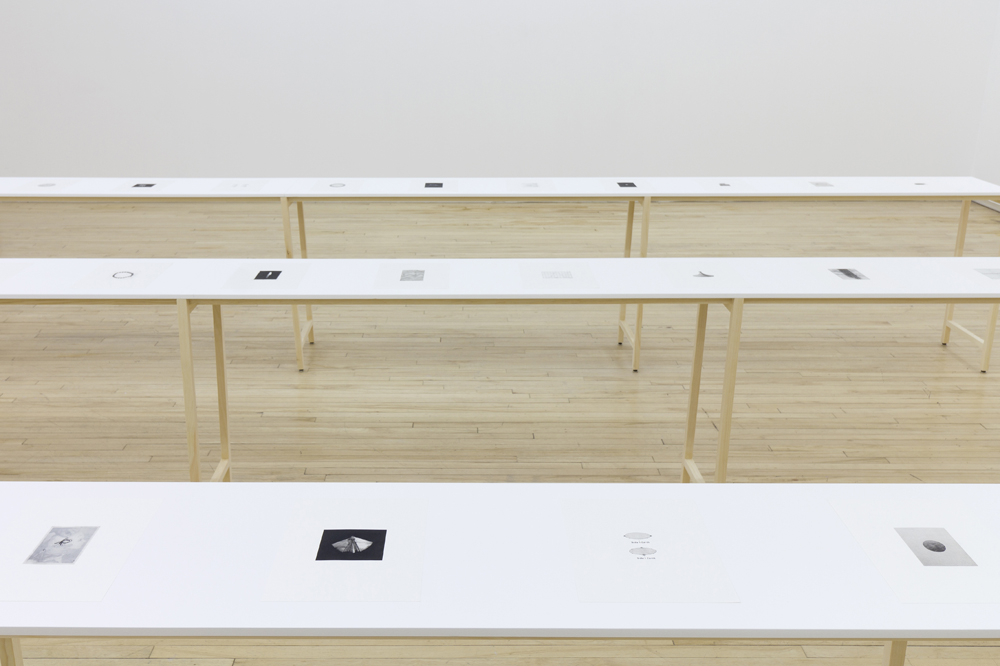




















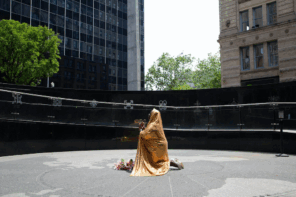
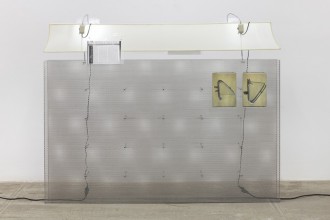
2 Comments